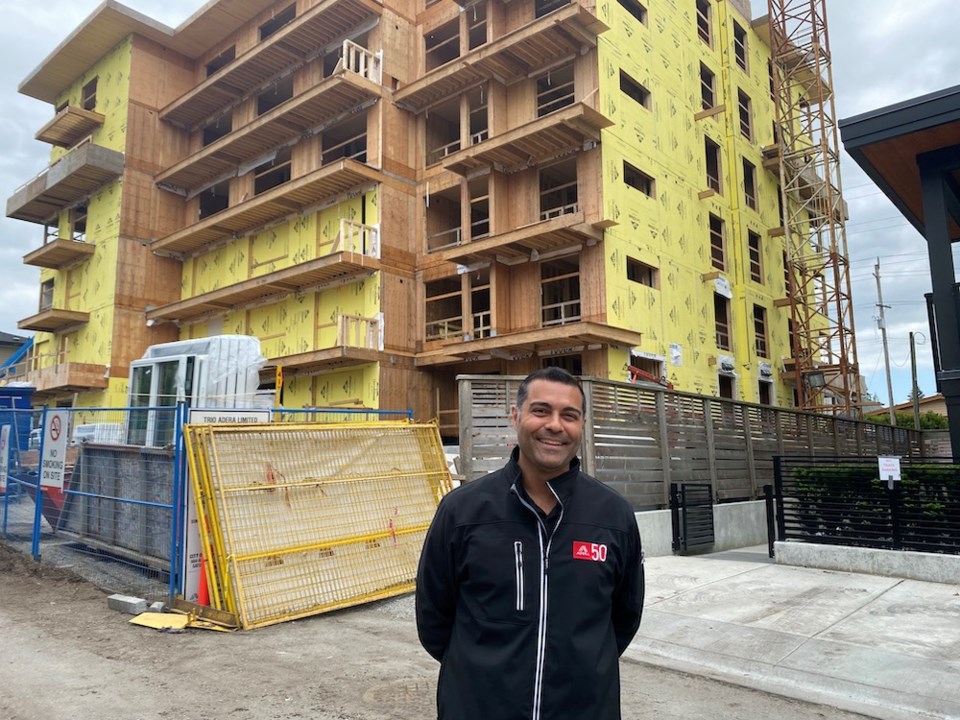Are prefabricated apartments the ace in the hole, so to speak, in solving British Columbia’s housing affordability crisis?
Most certainly, according to Alex Boston, executive director of the Renewable Cities think-tank at Simon Fraser University, which advocates for climate-focused, affordable and ecologically sustainable urban infrastructure.
"This is a huge opportunity to deal an ace card for British Columbia,” Boston told Metro Vancouver directors Thursday ahead of a report calling for the formation of an off-site rental home construction industry.
Boston, whose group advocates for prefabricated, mass timber construction, echoed the report calling for swifter government policy planning to spur off-site construction of prefabricated homes.
At issue is a housing construction industry facing threats from several directions, according to report author and Metro Vancouver housing planner Jessica Hayes.
“In recent years, housing delivery (particularly affordable rental housing) has been challenged by unprecedented construction cost escalation, a result of multiple factors including rising interest rates and labour shortages,” wrote Hayes.
Boston said about 40,000 construction workers will be lost to retirement in the coming decade and it’s unlikely they will all be replaced.
“Housing completions track with the number of boots on the ground,” said Boston.
So, one solution, said Boston, may be to create construction efficiencies: building multiple complexes elsewhere and moving them on to a site for quick assembly, not unlike modular homes.
But to do so, Hayes notes the province needs to establish an industry that will supply this demand; essentially, government will need to stimulate the demand by contracting with existing and new prefabrication construction companies. Once that’s done, a stream of construction will begin for non-market rental homes that will spill over into the private sector, once established.
Only about five per cent of new housing is presently built off-site in the province, despite the fact a more robust industry could save as much as 30 per cent on construction costs. One example of this construction technique cited by Boston was Vancouver’s King Edward Villa, which also met exceptional environmental standards.
“The use of building components prefabricated off-site in factories/warehouses creates significant efficiencies and eliminates costly delays, as they can be manufactured in advance, and rapidly assembled on site, minimizing disruption in established neighbourhoods,” stated the report.
Red tape costs will also be cut, Hayes notes, based on her analysis of the industry in Europe.
“Standardized guidelines and zoning regulations, including pre-approved reference plans could be made available open source, and wouldn't need to go through additional design review,” stated the report.
Metro Vancouver directors accepted the report, which calls for Metro Vancouver and the provincial government to coordinate a plan with municipalities.
Burnaby Mayor Mike Hurley warned, however, that time is of the essence.
“Where's the industry? We just don’t have the industry to support this right now,” said Hurley.
“This industry will likely take four or five years to get to where we need to be.”
So, said Hurley, “let’s not spend too much time making announcements about this.”
The plan will be coordinated by former Victoria Mayor Lisa Helps, who is now the housing solutions advisor to Premier David Eby.
This month’s Union of BC Municipalities (UBCM) conference will see such proposals from three cities: Quesnel, Courtenay and Vancouver.
The goal, notes Courtenay’s submission, is to utilize “hundreds of strategically located, public land parcels with underutilized land that can be used to cost effectively build affordable housing and grow a predictable pipeline of projects to mobilize investment in manufacturing plant expansion.”
The plan is also to incorporate mass timber construction. Presenting at the UBCM conference alongside Boston will be local home builder Rocky Sethi, who constructs wood-frame apartments.




